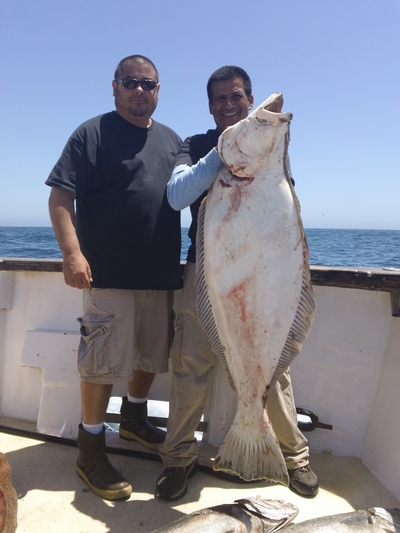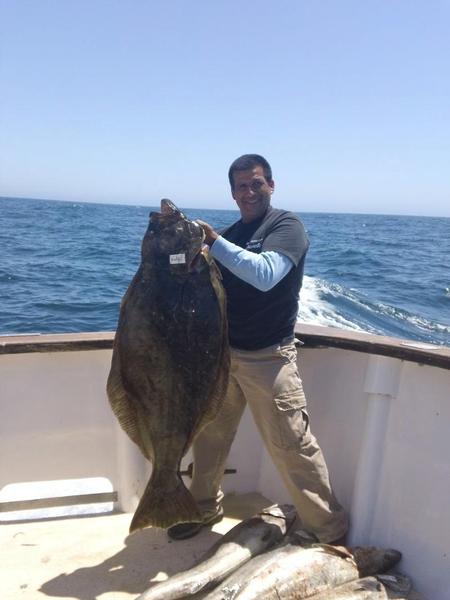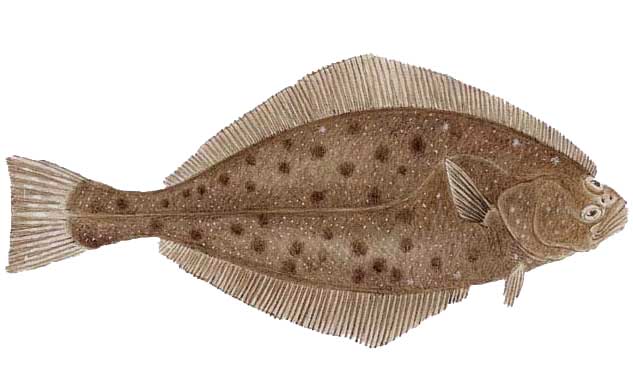World Record
It's Official #1 - Francisco Rivera of Camarillo, CA officially holds the IGFA World/State record for catching his 67lb 5oz, California Halibut on the Mirage, July 1, 2011 at Santa Rosa Island.
Channel Islands Sportfishing is a Certified IGFA Weigh Station!
This World Record was weighed & certified right here at the landing!


Halibut are the biggest known flatfish which make them prized for food. Masters of camouflage, the Halibut is a formidable saltwater predator. They’ll eat any bait fish or mollusk careless enough to come within reach of its powerful jaws.
Despite its predatory prowess, halibut will attack suspicious hook bait in a wary manner, testing it for signs of foul play. For this reason, anglers need to to be extremely savvy when fishing these powerful prized fish. While Halibut prove to be formidable opponents, our Skippers are extremely knowledgeable of their haunts, and will position the vessel for greatest success right in prime foraging areas. If you’re lucky, you just might catch a record breaker, like Francisco Rivera did with his 67 lb 5 oz California Halibut July 1, 2011 aboard the Mirage!
Halibut
Hit the seas with us and catch one of the most popular sportfish around, the Pacific Halibut.
The Halibut is a flatfish and is a type of Flounder. Several other flatfish are also known as Halibut as well. Halibut live and feed near the bottom of the sea. They are a popular fish for eating most usually found in the non-tropical regions of the Northern Pacific and Atlantic Oceans. Halibut are generally brown, grey, black or some combination of those colors on their top-side and a white color underneath their bodies.

Flatfish
Halibut are the biggest known flatfish which contributes to their popularity as food fish. The most peculiar aspect of their physical appearance is that both of their eyes are oriented on the same side of their head. They are born with eyes on either side of their head and gradually one eyes makes its way to the other side of the head (strange isn’t it?). Once both eyes are fixed on one side of the body the Halibut start to swim on their side near the bottom of the sea with their eyes facing up.
Not Picky Eaters
Halibut generally eat anything they can swallow, even other Halibut if the size is right. They spend most of their time at the bottom attempting to blend in with the ground, but they might swim around to find food if necessary. Halibut are generally near the top of the food chain due its large size, as a result they are usually only eaten by larger sea life such as sharks, carnivorous whales, and sea lions.
Northwest Popularity
One of the most popular areas for Halibut fishing is in the Northern Pacific Ocean near Canada and the North Western United States. Halibut do not reproduce until almost age ten therefore some regulation regarding size minimums is required to ensure that the Halibut population is sustained.
Previously Halibut fishing was regulated by restricting fishing to specific hours or days, and interestingly would force fishing vessels to leave port regardless of the weather forcing them to work in harsh conditions. Also, as a result fresh Halibut was seldom available. More recently, fisherman are instead restricted to a total number of fish they are allowed to catch per nine month fishing season. As a result, Halibut is easily available most times of the year in markets.
Halibut are also fished for sport in some areas, including Canada and Alaska. The strong Halibut provide a significant challenge for fisherman and as a result are considered a prized fish to catch.
Halibut are a highly popular fish for eating with a large variety of recipes existing for grilling, broiling, and frying. In California and Mexico particularly, Halibut Fish Tacos are very popular.
Atlantic Halibut Going Extinct
The Pacific and Atlantic Halibut are actually two different species with the latter approaching consideration for endangered status, because of this most Halibut consumed in the eastern United States actually are Pacific Halibut.
Changing Diet, Changing Texture
Recently there has been an increase of a Halibut condition in which the meat of some affected fish has an unusual consistency causing it to fall apart when cooked. While still safe for consumption it is generally considered undesirable. It is unknown why such a condition has occurred but it is thought to be related to the Halibut’s diet.
Check back as often as possible for interesting information about Halibut, fish counts, recipes and cooking suggestions, pictures of our latest catches, and more.










